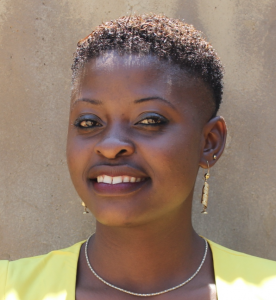Friends Secondary School Tombo is located at the foot of the Nandi Escarpment in a rural area. The school environment is free from noise and, thus, conducive for learning. The school has planted trees and flowers in the compound, creating a beautiful look and good air circulation. The school does not have a dining hall, so the students eat their meals under the trees, which provide shade.
Established in 1999 as a community initiative with support from the Friends Church, its population has grown gradually over the years. Today it serves 351 students and 31 teachers and staff.
Despite its age, the school has never obtained a sufficient supply of clean water for its students. The only water source on campus is a small plastic rain tank that runs dry in days after the rains stop. This is because the tank's capacity is minimal compared to the student population's needs.
To make up for its lack of water, the school requires students to leave campus to fetch water at every break time, including lunch, and sometimes even during class if the water runs out. To fetch water, students head to a borehole well outside the school grounds shared with both the primary school and the entire community. These groups overcrowd the well, causing long lines and wait times.
Students waste a lot of time each day waiting for their turn to fetch water. The well itself takes a while to fill their jerrycans, too - 95 pump strokes to fill a 20-liter container. All of this wasted time leads to incomplete syllabus coverage and very poor academic results.
"Getting water from this source is tiresome, especially in the morning. I get to school tired because of the distance and pumping water - it takes time, which makes me exhausted. Even listening to the teacher becomes hard," said student Julia.
To hurry up and get back to class, students crowd at the well, trying to push containers into the flowing water as fast as possible to fill them up. This means physical distancing is put to the side during each water break to return to school. Teachers are supposed to monitor students at the well to enforce physical distancing, but there is only so much the staff can make the students do since they are all suffering from the lack of water.
"The fetching water process is time-consuming, and this makes me not meet the day's target. With the COVID-19 pandemic, a teacher is forced to be there in person and supervise the students when they fetch water because of keeping social distance," explained teacher Hesbon Musiomi.
Additionally, even though water from the well should be safe to drink, students often mishandle the water on their walk back to school. Fingers dip into open containers without lids, and some students use their hands to direct the well water into their containers to make sure none of it spills in the process. Without sufficient water for consistent handwashing back at school, that means students hands' can contaminate the water and, as a result, put themselves and others consuming the water at risk of contracting water-related illnesses.
What We Can Do:
Rain Tank
A 75,000-liter rainwater catchment tank will help alleviate the water crisis at this school. The school will help collect the needed construction materials such as sand, bricks, rocks, and water for mixing cement. We will complement their materials by providing an expert team of artisans, tools, hardware, and the guttering system. Once finished, this tank will begin catching rainfall used by the school’s students and staff for drinking, handwashing, cooking, cleaning, and much more.
The school and we strongly believe that all of these components will work together to improve standards at this school, which will help lead to better student academic performance and unlock the potential for these students to live better, healthier lives.
Handwashing Stations
The student health club will oversee the two new handwashing stations we will provide and ensure they are kept clean and in working condition. The club leaders will fill the handwashing stations with water daily and make sure they are always supplied with a cleaning agent such as soap or ash.
VIP Latrines
Two triple-door latrine blocks will be constructed with local materials that the school will help gather. Three doors will serve the girls, and three doors will serve the boys. These new latrines will have cement floors designed to be easy to use and clean. And with a rain tank right on school property, there should be enough water to keep them clean.
Training on Health, Hygiene, COVID-19, and More
We will hold a one-day intensive training session with students, teachers, and parents. This training will cover a wide range of topics, including COVID-19 symptoms, transmission routes, prevention; personal and environmental hygiene; and the operation and maintenance of the rain tank, latrines, and handwashing stations. There will be a special emphasis on handwashing.
Our team of facilitators will use various methods to train, including participatory hygiene and sanitation transformation and asset-based community development. We will initiate a student health club, which will prepare students to lead other pupils into healthy habits at school and home. We will also lead lectures, group discussions and provide illustrative handouts to teach health topics and promote good hygiene practices within the school, including handwashing and water treatment. We will then conduct a series of follow-up training before transitioning to our regularly scheduled support visits throughout the year.

 Rainwater Catchment
Rainwater Catchment
 Rehabilitation Project
Rehabilitation Project









































